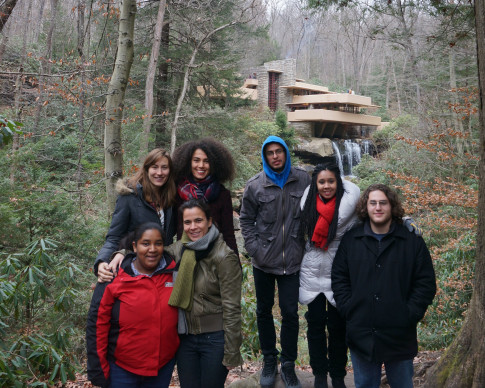One of the many things I love about RAND is how it offers ongoing education for its employees, from lunch-and-learn seminars to topical movie viewings to company-sponsored field trips. A group of my RAND colleagues and I recently took advantage of a weekend road trip to Pittsburgh to visit what has been called the single most influential residence in America’s history, Frank Lloyd Wright’s Fallingwater.
Located in Steward Township about 43 miles southeast of Pittsburgh in the southwest corner of Pennsylvania, the 2,885-square-foot Fallingwater, also known as the Kaufmann Residence, was built in 1935 and famously sits atop a waterfall fed by the Bear Run River.
A prolific architect, interior designer, and educator, Wright championed and popularized a design philosophy he called organic architecture. Encouraging harmony between the natural world and human habitation, organic architecture approaches design with the intention of incorporating buildings and their furnishings with the site and surroundings to create an integrated whole. Among Wright’s many designs, Fallingwater best exemplifies this approach.
After journeying along narrow gravel roads, it was with great excitement that we arrived on the grounds of the iconic residence, which appeared to be hiding just around a bend in a stream in a quiet corner of the township. The bare winter landscape made for perfecting viewing, exposing every detail of the home, each cantilever that appeared to magically defy gravity.
We were stunned by how beautiful the 80-year-home remains. It was clear how the building works with nature and what a structural feat it was for its time. As expected, time has taken a toll on the residence, and our group of engineers and architects couldn’t help but point out the defects and suggest repair solutions to one another. But even the repair discussion couldn’t take away from our appreciation of the design. From its custom-made furniture to the waterfall-fed swimming pool, it really is a masterpiece.
My RAND colleagues Matthew Kornreich, Cesar Macias, Esin Pektas, Jeanine Smith, Santia Valerio, and and I left feeling inspired having seen this architectural wonder up close with our own eyes, and we thank RAND for affording us this opportunity.
Sara Tsiropinas is a Project Associate at RAND.

